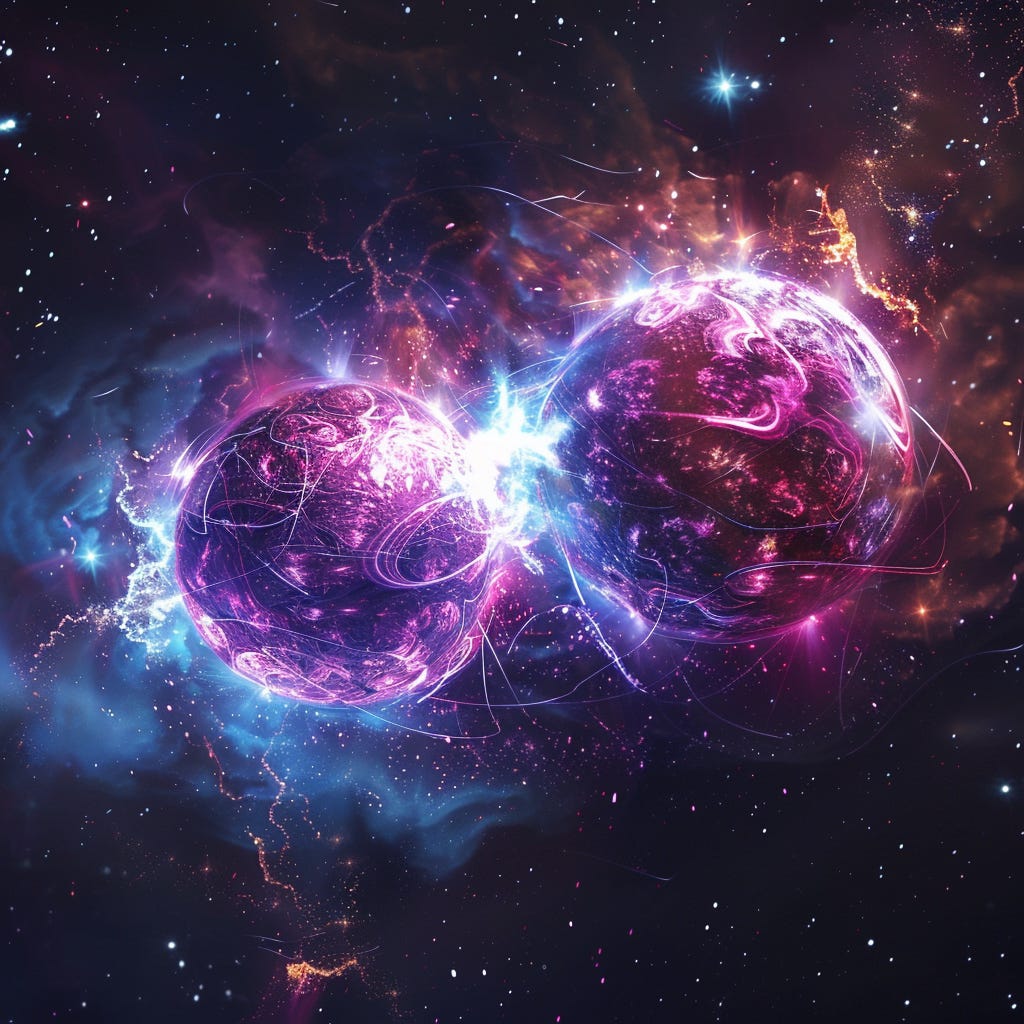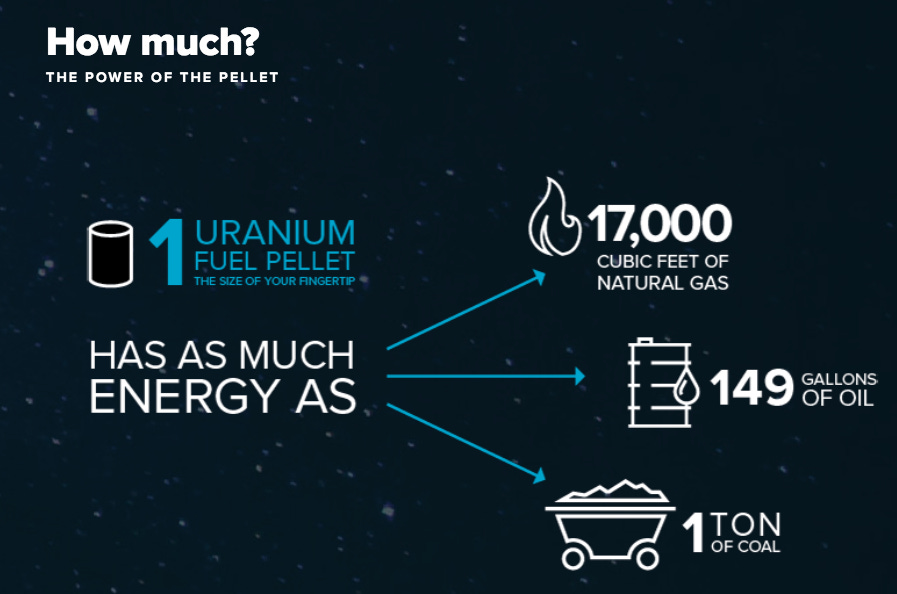Energy density is key to protecting the environment
Consider uranium: the underrated element of awe
“One figure strides forth... Huge, invincible, with power so great it continually feeds upon itself... The Incredible Hulk!”
Energy density doesn’t get much attention, probably because it’s not a particularly exciting term. In physics, energy density refers to the amount of energy stored in a given volume or mass of a substance. The more energy is stored in a smaller volume or mass, the higher the substance’s energy density is.
Uranium is a metallic chemical element in the periodic table and one of the most energy-dense materials known to us. Uranium provides exceptionally high power density through nuclear fission, making nuclear power plants superior to thermal power plants such as coal, fuel or gas, and chemical plants.

In comic books and other pop culture, radiation often creates superheroes. Some gain powers through radiation, such as Spider-Man and The Hulk, and others use radiation as a superpower, like Dr Manhattan, Captain Atom, Radioactive Man, and Atomic Man, to name a few examples.
When the German chemist Martin Heinrich Klaproth discovered uranium in 1789, he named the element after the planet Uranus, which had also recently been found. Klaproth said: “I have chosen that of uranite, (Uranium), as a kind of memorial, that the chemical discovery of this new metal happened in the period of the astronomical discovery of the new planet Uranus.”
Since then, scientists have developed a theory that the collision of two neutron stars created uranium. Researchers have linked many heavy elements in the solar system to a single neutron-star collision that occurred about 80 million years before the birth of the solar system. Something we now associate with being underground was likely once formed in outer space. Pretty good fodder for superhero narratives.
The fictional character Atomic Man, introduced to the world in 1945, was a scientist working on a sample of uranium-235 when he was transformed into a new entity that was immune to all forms of radiation and weapons. Many people consider him to be the first superhero of the Atomic Age, as the broader potential applications of uranium were being explored at this time.
On Earth, uranium is one of the most common elements in the Earth's crust, and uranium ore deposits are found in soil, rock, oceans and rivers. We mine it for various purposes - in the early days of its discovery, it served as a colourant for ceramic glazes and for tinting in early photography. Now, uranium is used to produce isotopes for medical, industrial, and defence purposes, as well as to power commercial nuclear reactors to produce electricity.
Uranium is chiefly produced in Kazakhstan, Canada, and Australia, but there are ample reserves worldwide. Some people argue that uranium is a finite source that will run out soon, but reactor physicist Dr Nick Touran has calculated that nuclear fuel will last us 4 billion years. By then, we should have achieved fusion technology or something just as powerful to replace it.
The atomic avenger
“The real wealth of the Nation lies in the resources of the earth - soil, water, forests, minerals, and wildlife” - Rachel Carson
Back to energy density: uranium metal really packs a punch. It is 1.67 times more dense than lead, and 1 kilogram of uranium-235 contains 2 to 3 million times the energy equivalent of 1 kg of oil or coal. This means that a relatively small quantity of nuclear fuel can produce significant amounts of energy through fission. How does uranium compare to other fuels? Calculations vary a little, but through fission, 1 kg of enriched uranium corresponds to roughly 10,000 kg of mineral oil or 14,000 kg of coal. That’s a lot of raw material that can be left in the ground.
Although coal, oil, and gas have lifted billions of people out of poverty because of their energy density, they are not comparable to nuclear energy. Wealthy nations need to replace them as fuel sources because they are polluting. Luckily, there is a superior alternative: if materials were superheroes, uranium would be one of the best contenders as a powerful, life-saving force for good. A single nuclear fuel pellet in a typical reactor creates about the same amount of energy as one tonne of coal.
In pop fiction, The Incredible Hulk was created by exposure to heavy doses of gamma radiation. He is strong and invincible and is known for saying “Hulk is the strongest one there is!", but he also struggles to learn to wield the immense power that radiation has given him. The potential and danger of radiation are widely considered in pop culture, usually because comic book artists like the idea of mutants, but these struggles are also reflected in the scientific world, where the study of radiation initially had tragic consequences, such as the death of physicist Marie Curie who discovered polonium and radium, as well as life-saving applications such as nuclear medicine.

To paraphrase Curie, radiation is not to be feared, only understood. There are far bigger threats to humankind, such as air pollution, climate change, and energy scarcity. Some people argue that we should only use ‘renewable’ energy sources because they will never run out, like wind and sunshine, but few seem to ask whether an energy source can be considered ‘renewable’ when it is also only occasionally available (intermittent). ‘Renewable’ does not mean ‘constant’, but our needs for electricity are continuous.
Meanwhile, nuclear energy stands its ground. It’s reliable and dependable, with the highest capacity factor of all energy sources, which means that power plants produce maximum power more than 92% of the time during the year. That’s almost twice as much as natural gas and coal and nearly three times more than wind and solar farms.
Since less raw material is needed to create the same amount of power, nuclear energy also has a very small land footprint compared to the alternatives. More land is required to mine the coal and dig the metals and minerals used in wind turbines and solar panels out of the ground, and for the sites they are built on, which makes it the most land-efficient source of energy.

Considering environmental and efficiency standards, the energy density of fuel wins in all areas, and it is the main reason nuclear energy is a superior source of power generation. Want to save the world? Mine less and use less land and resources. Uranium is, in scientific terms, energy-dense, but in the context of human life, it is energy-rich.
We are an energy-dependent species, and as we discover and depend on more elaborate technologies, we will need more energy to fuel our lives. We know that power-hungry technology, such as artificial intelligence, is becoming more widespread. We will also need desalination plants to address water shortages, more air conditioning units in the world’s hottest regions, and other energy-heavy technologies. To meet our energy needs and achieve a clean and steady grid, we must build many reliable, high-functioning nuclear power plants powered by uranium. Although there are other initiatives to rival the need for uranium, so far, this fuel source has saved millions of lives through nuclear power plants. This real-life Hulk is at our disposal, a gift from the cosmos. As Spider-Man once said, “With great power comes great responsibility.” It would be dense of us not to wield it.







In a very real sense, energy density is the technical history of humanity. The first artificial heat used by humans came with the discovery of fire about 800,000 years ago. Fire, along with clothing and shelter, was one of the key technologies which permitted humans to migrate to temperate climates from the purely subtropics.
Fire made possible the smelting of iron. First used and smelted about 3000 BC, iron required much higher temperatures than simple cooking fires to forge into tools or weapons. That in turn required more efficient fuels containing greater heating ability than wood, such as charcoal.
As Zion rightly noted, uranium is the most energy dense fuel source ever discovered. That means its fuel produces a huge amount of energy per unit of mass. The typical fuel requirement of one modern nuclear power reactor is about 150 tonnes of uranium-oxide fuel. Gathered in one place, this mass of fuel would form a cube of about three metres. The same size of coal-fired station would consume several million tonnes of coal annually. It would need so much coal that it would be receiving one large 100-car coal train about twice a week.
So as a species our entire existence is dependent upon high energy density fuels. And this dependence on energy density increases as our knowledge and technology grows. Increasing energy density is the only way to expand the benefits of energy use and technology to those parts of the world currently lacking it.
Yes correct. Energy/power density is one of the most important factors when considering different sources. The importance of this parameter is usually under-appreciated by energy pundits, especially those without an engineering background.